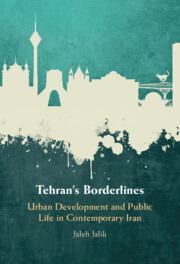5 - The Vista
Spatial Boundaries, Self, and Others
Published online by Cambridge University Press: 30 January 2025
Summary
In this chapter, I argue that geographical location and spatial orientation influence how residents of Tehran think about who they are and how they define and negotiate boundaries. In Tehran, the spatial locations of self and others in the hierarchical structure of the city remain signifiers of social status, yet the use of public spaces in different parts of the city and easier access to these spaces have complicated established social relations. I discuss how social, symbolic, and spatial boundaries are negotiated in a changing urban environment and how such processes create a sense of belonging or alienation – of being included or excluded – in different spaces. Furthermore, I show that while dividing lines among social groups in Tehran are conceptually powerful, they are not entirely class-based; rather, they are defined by a complex set of values and relations that are constantly questioned and renegotiated in public spaces.
- Type
- Chapter
- Information
- Tehran's BorderlinesUrban Development and Public Life in Contemporary Iran, pp. 76 - 92Publisher: Cambridge University PressPrint publication year: 2025

